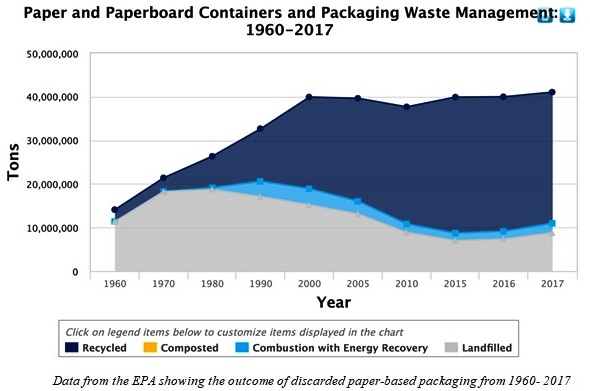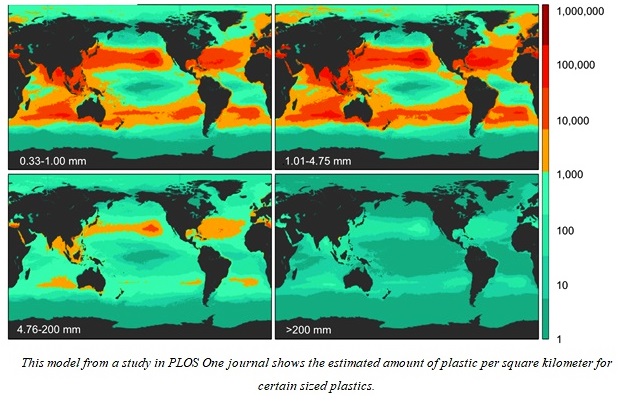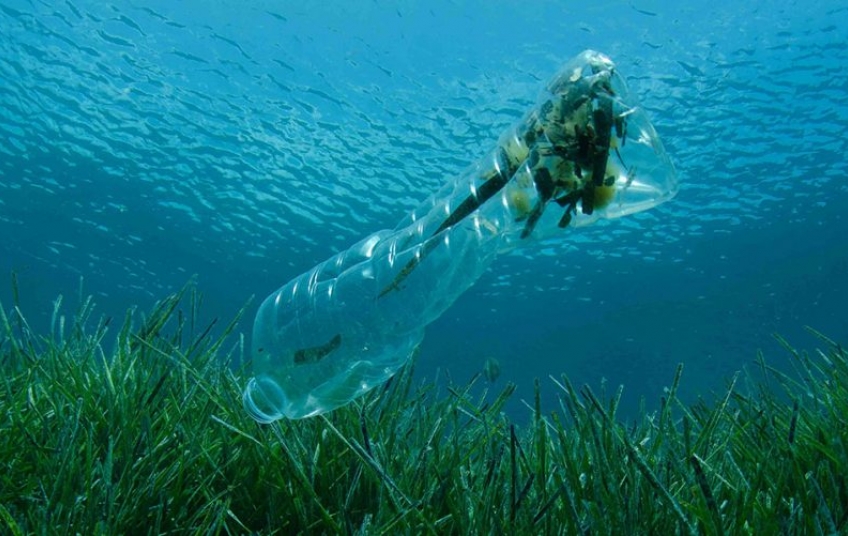For much of history, most of humanity’s large-scale problems have been caused by a lack of resources. A couple of examples of these problems are a lack of clean water or a lack of consistent medical care. Now the increasing abundance of plastic is rapidly becoming a global issue that could have catastrophic effects. In 2018, National Geographic estimated that 40% of plastic produced was put into single use packaging. Despite these increasing rates of plastic production, there are promising engineering advancements in plastic recycling and alternatives to plastic packaging.
In 1907, Leo Baekeland invented Bakelite. Bakelite was the first synthetic plastic derived from fossil fuels. Plastic production boomed throughout the 20th century as it became a cheaper and equally durable alternative to other materials such as wood and paper. As synthetic plastic production continued, one of its major flaws was discovered, poor degradability. In fact, some plastics can take up to 1,000 years to degrade depending on the molecular weight of the polymer. Despite this flaw, plastic has continued to be used in single use packaging. The EPA estimates that 120,000 tons of plastic containers and packaging was discarded in 1960. The EPA estimates that 14.49 million tons of plastic packaging was discarded in 2017 alone and only 1.89 million tons of the discarded plastic packaging was recycled. Another 2.47 million tons of plastic packaging was combusted with energy recovery; this is a process where hazardous municipal solid waste is burned to create energy. The remaining discarded plastic packaging was sent to landfills in 2017. This means that 69.91% of discarded plastic packaging was sent to landfills with only 13.04% being recycled and 17.04% being combusted into energy. Currently, the EPA’s data on discarded packaging only goes as far as 2017. The rates of recycled plastic packaging have likely decreased because in 2018 China stopped accepting most plastics from foreign counties for recycling purposes. China was the biggest importer of waste and could profitably recycle much of the waste. This decision by China would of likely had an influence on the data from 2018 to the present day, but the EPA has not yet estimated the numbers for 2018. However, plastic packaging was not the most discarded packaging according to the EPA. The EPA estimated that 41.06 million tons of paper and paperboard packaging was discarded in 2017, which is significantly greater than the amount of plastic discarded in 2017. However, only 30.8 million tons of the 41.06 million tons of paper and paperboard packaging was recycled. The EPA also estimated that 2.16 million tons of paper and paperboard packaging was combusted with energy recovery and only 8.82 million tons of paper-based packaging was landfilled in 2017. This means that the percentage of paper-based packaging that is recycled is about 73.25%, and the percentage of paper packaging combusted with energy recovery is about 5.26%. This also means that 21.48% of paper-based packaging ended up in landfills compared to 69.91% of plastic based packaging that ended up in landfills. From this data, one could easily conclude that paper packaging is either easier or more profitable to recycle than plastic packaging. As the rate of plastic packaging production continues to climb and over half of it is landfilled, there are many environmental and economic problems along with potential risks associated with plastics.


Runoff causes many plastics to end up in the ocean, which has devastating effects on marine ecosystems and could lead to a loss of trillions in marine resources annually. It has been estimated that 270,000 tons of plastic are floating in the sea, and this plastic affects more than 700 different marine species. Plastics are found inside over 90% of sea birds and over 50% of sea turtles. Marine animals eat ocean plastics because special types of algae cover these plastics. When the algae on these plastics die, they release a Sulfur compound called dimethylsulfoniopropionate (DMSP). Marine animals are attracted to this compound for food and then eat the plastic. Since plastic degrades slowly, months after an animal dies from plastic and the animal’s remains break and decay, the plastic still remains for other animals to eventually eat. Ocean plastics can also potentially have negative effects on humans too. For 1.4 billion people, seafood makes up more than 20% of food intake by weight. So as more marine animals die from plastics, there is less to feed humans. The plastic polymers inside contaminated sea foods could potentially lead to lethal and sublethal harms such as problems with one’s reproductive system. More research is needed to make a full conclusion on ocean plastics, but right now research concludes that the effects of marine plastics are minimal to humans. However, some researchers claim that fisheries are more at risk from plastic problems such as bad publicity and diminishing supply. It is estimated that marine ecosystem services, the ocean’s natural assets, is estimated to provide $49.7 trillion annually. Researchers estimate that plastics will cost the marine ecosystem services, the worlds natural assets, between 1-5% annually. This equates to a fiscal loss of 500 billon to 2.5 trillion dollars annually. These researchers also estimated that each metric ton (2204.623 pounds) of plastic costs the marine ecosystem services between $3,300 and $33,000 in terms of reduced marine assets. Despite the uncertainty of health effects of marine plastics, studies in the Journal of the Yale School of Environmental show that keeping edible and hygienic products in plastic packaging can be linked to ADHD, infertility, allergies, obesity, and other health issues with humans. Another environmental threat of plastic production is the fact that plastics are made from fracking. The petroleum is turned into the pellets used in plastics. Fracking has many environmental problems such as pollution and contribution to climate change. It is estimated that plastic packaging used in the United States uses 200,000 barrels of oil daily for production. Continuous production of oil has led to many economic issues with plastic recycling. Plastics cause many environmental issues, but what is being done to make plastic more sustainable and recyclable?

Although plastic production continues to trend upward, there are innovations being developed to help make plastic more sustainable. A major problem with plastic recycling is it is simply cheaper to create more virgin plastics than it is to recycle existing plastics. As of now, only two types of plastic, PET and HDPE, are economically feasible to recycle. Virgin plastic production is increasing 4-5% annually. The plastics become less durable every time they are recycled. PureCycle Technologies is a startup that aims to assist in fixing this problem by using additives to repurpose plastics for different uses and increase durability. Basically, PureCycle wants to break plastics down and add appropriate additives to increase durability and help better suit the new plastic for its intended purpose. PureCycle also supports Procter & Gamble’s goal of using 100% recyclable and renewable materials in its packaging. Scott Trenor, a scientist at Miliken & Company and a research contributor to PureCycle Technologies, told National Geographic, “A lot of the separation capabilities in their infrastructure was built 20 or 30 years ago when there wasn’t as much plastic, so they were built for paper, cardboard, steel, and glass. As those materials have decreased in volume and plastics have increased, the technology and infrastructure hasn’t kept up.” Trenor, an industry expert, is basically saying that many recycling technologies used today are not designed for large amounts of plastics. One way to improve recycling factories for the 21st century demands is to use smaller and more regionalized recycling factories. Researchers at the University of New South Wales in Sydney, Australia are looking into ways to create modular factories. The goal of these modular factories is to create small local factories to handle peoples’ recyclable waste and turn it back into raw materials. These factories would help cut down transportation costs. There are special street sweepers in Sydney, Australia that have been tested to take and sort waste on streets and sell the recyclable wastes to recycling companies; this helps plastics not end up in bodies of water from street run off and improves recycling processes. One potential way to cut down on the labor costs associated with recycling is to use artificial intelligence and robotics. These technologies are still being tested, but the idea is to use artificial intelligence to sort plastics at recycling centers. Also, special types of bacteria are being used to destroy plastics. These types of special bacteria can break down plastics into the biodegradable chemical polyhydroxyalkanoate (PHA), but these types of bacteria are limited to the amount of PHA they can produce, and scientists are working to improve that. Another option for recycling plastics is chemical recycling. Chemical recycling is a process used to chemically break down plastics and turn the plastics back into their fundamental materials. There are many problems of chemical recycling such as there has been no large-scale successful recycling of plastics with chemical recycling. Most forms of chemical recycling recreate plastics into fossil fuels, but there are many downsides to this due to fossil fuels having negative environmental impacts. The long-term reliability of these techniques of disposing plastics are questioned as many consumers become more aware of the harms of fossil fuels and lowering costs of renewables. One major obstacle for mass recycling of plastic is making recycled plastics cheaper than virgin plastics. There has been a lot of research done on this problem and solutions have been found for this pressing issue and some are very unprecedented. One unprecedented and innovative project is a section of a long road located north of Melbourne Australia. This road is 16 miles long and paved with 200,000 plastic bags, 63,000 glass bottles, and 4,500 toner wastes from printer cartridges. If more roads can be economically created with packaging, it could be a very good solution to the plastic problem. It is also no surprise that the general public is becoming more skeptical of plastic recycling. Many plastics that people put in thier recycling bins are not recycled because of problems with sorting, contamination, or its simply not profitable for recycling companies. Also, more people are becoming aware that the first plastic recycling marketing campaigns from the 90’s were paid for by the petroleum industry to seemingly protect plastic production. In the 70s through 90s, more people became aware of the impact plastic had on the environment. People also learned about how the petroleum industry paid for recycling ads to protect plastic production, which is now being viewed as a corporate green wash by many (The NPR Planet Money Podcast has a great episode on this called “Waste Land”). Even if plastic recycling works efficiently, it would still be better for the environment to avoid as much virgin plastic production as possible (remember virgin plastics are made with fracking). If 40% of plastic is used in single use packaging, what innovative packaging alternatives are being designed to replace plastics?
There are some amazing alternatives to plastic packaging, which are becoming more mainstream. There have been many major plans to move away from plastic. The European Union banned single use plastics in 2019, which is supposed to take effect in 2021. In 2018, Starbucks, a global Seattle coffee company, promised to completely phase out non-sustainable plastic straws with lids that do not require straws. For customers that still want to use a straw, Starbucks will provide a straw made from paper or compostable plastic. Paper packaging is becoming an increasingly popular alternative to plastic packaging. Paper is made from trees, which are renewable resources and paper production has less of a carbon footprint than plastic production. Even though paper is biodegradable, it does degrade slowly in landfills and paper production can lead to deforestation. Paper’s feasibility to be recycled is a huge environmental advantage for paper over plastics. Another alternative to plastic packaging is organic packaging. One form of organic packaging is packaging, which involves a special type of mushroom root called mycelium. Mycelium is like an adhesive that binds agriculture waste together to create a special type of foam like packaging. Organic packaging is completely biodegradable and compostable. As marijuana use becomes increasingly legalized, some manufacturers are trying to create cannabis packaging. Consumers should be skeptical of cannabis-based packaging as cannabis has many side effects, which could potentially harm the consumer. The most unusual and upcoming alternative to plastic is edible packaging. Yes, packaging a consumer can eat. One form of edible packaging is made from milk-based proteins. This allows the packaging to be durable, but the purpose of packaging is to “protect what it sells”. Edible packaging would protect what it sells, but edible packaging like other packaging would be exposed to transportation elements such as differing temperatures and bacteria contact. This could make the edible packaging unsafe to eat and harm consumers, who may be unaware. There are many promising alternatives to plastics that would significantly decrease our need for plastics in single use packaging.
Producing less plastic packaging would result in less plastic harming marine ecosystems and consumers and would decrease fracking. This can be achieved with a focus on greater recyclability rates in plastics or creating biodegradable alternatives to plastic packaging. This plastic use problem must be solved as fast as possible. It is estimated that by 2050 there will be more plastics by mass than there are fish in the ocean. This is a bleak future that we do not need or should want. Innovative engineering is needed to help solve the plastic use problem. At our current rate there is a stark environmental future, but humanity has solved many problems and has every ability to solve the mass reliance on plastic problem.
References:
A brief history of plastics, natural and synthetic
https://www.bbc.com/news/magazine-27442625
Biodegradation of Synthetic and Natural Plastic by Microorganisms
Fatimah Alshehrei* http://pubs.sciepub.com/jaem/5/1/2/
Fast facts about plastic pollution
https://www.nationalgeographic.com/news/2018/05/plastics-facts-infographics-ocean-pollution/
The world is scrambling now that China is refusing to be a trash dumping ground
https://www.cnbc.com/2018/04/16/climate-change-china-bans-import-of-foreign-waste-to-stop-pollution.html
Containers and Packaging: Product-Specific Data
https://www.epa.gov/facts-and-figures-about-materials-waste-and-recycling/containers-and-packaging-product-specific-data
Five Ways That Plastics Harm The Environment (And One Way They May Help)
https://www.forbes.com/sites/grrlscientist/2018/04/23/five-ways-that-plastics-harm-the-environment-and-one-way-they-may-help/#213d533d67a0
Global ecological, social and economic impacts of marine plastic
https://www.sciencedirect.com/science/article/pii/S0025326X19302061
Can Chemical Recycling Solve The World's Plastic Problem?
https://www.youtube.com/watch?v=LPllpwMuV9Y
Waste Land Planet Money NPR podcast
https://www.npr.org/transcripts/912150085
Innovations in recycling
https://www.nationalgeographic.com/science/2020/01/partner-content-innovations-in-recycling/
Innovations In Plastic Recycling That You May Not Already Know About
https://www.ennomotive.com/innovations-plastic-recycling/
E.U. Sets Standard With Ban on Single-Use Plastics by 2021
https://time.com/5560105/european-union-plastic-ban/
Starbucks to Eliminate Plastic Straws Globally by 2020
https://stories.starbucks.com/press/2018/starbucks-to-eliminate-plastic-straws-globally-by-2020/
Is Paper A More Sustainable Flexible Packaging Material Than Plastic?
https://www.forbes.com/sites/woodmackenzie/2020/08/24/is-paper-a-more-sustainable-flexible-packaging-material-than-plastic/?sh=469c2f4f12d4
Health Effects Marijuana: How Can It Affect Your Health?
https://www.cdc.gov/marijuana/health-effects.html
A cannabis packaging seller
https://sanapackaging.com
Plastic Pollution in the World's Oceans: More than 5 Trillion Plastic Pieces Weighing over 250,000 Tons Afloat at Sea
https://journals.plos.org/plosone/article?id=10.1371/journal.pone.0111913


































